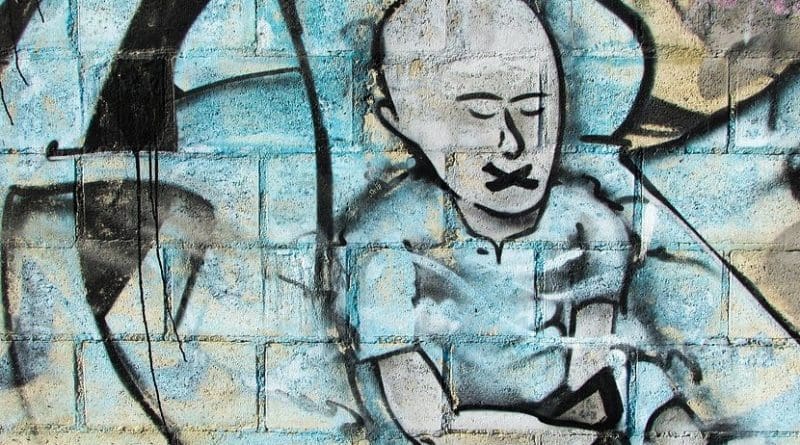Turkey And India: Media Freedom Under Threat – OpEd
Media is seen as the “fourth estate” in modern democracies. It acts as a “watchdog” for state affairs. The media coverage of issues is very important in agenda setting. Media freedom is essential to a working democracy as agenda-setting is one of the significant roles of media. There is a constant relationship between the ruling elites and those governed in democratic countries.
Journalism serves various functions such as giving information, making investigation, providing society a public forum, and a basis for democratic education. According to Marxist thinker Louis Althusser media is one of the ideological state apparatuses through which elites exercise authority in a more efficient way.
This piece is an attempt to analyze Turkish media scene and media-politics relationship with that of the Indian case. Both cases have similar practices in terms of media-politics relationship and media ownership structures. Both countries face a major threat to media freedom which weakens democratic processes.
Indian media is known as one of the actors among the oldest in the world. Based on 2019 data, there are around 900 private satellite TV stations, around half of them devoted to news coverage. By 2007, 62 of the world’s bestselling newspapers were published in China, Japan, and India. It is stated that, India has the second largest market in the world for newspapers.
With regards to digital media, it can be said that, in 2009, the mass use of social media was witnessed in national elections, when, for the first time, online voter registration got launched. In terms of political orientation, the media profile in India is regarded as left-leaning liberal, especially the English-language media.
With regard to media ownership, it is known that the main media actors in India are family-owned. The Press Council of India is the actor responsible for the press regulation. It has the function of ensuring that the Indian press is free. However it is very hard to keep the media free in Indian context as the big families own media outlets and compete in different business sectors as well. These families also have a link with the political actors as well.
India lacks an effective, independent press. In this regard, a significant issue to emphasize while analyzing media and politics relationship in India is the issue of advertising. Advertising can present a form of potential control over editorial content as media holds greater dependence on advertisement revenues. It is noted that in 2019, the Modi government used advertising campaigns to reward and punish the Indian media.
On the other hand, with regard to Turkish media scene, it is known that Turkey hosts various newspapers. 176 national, 51 regional and 2247 local newspapers were published in 2017, totaling 2474. The number of newspapers and magazines published in 2017 decreased by 2.3 percent decreased to 6124 compared to 2016.
Turkey’s broadcast media organs have a very high penetration as satellite dishes and cable systems are widely available. According to the Media Ownership Monitor report, around 71% of the Turkish media outlets belong to four big companies close to the government: Turkuvaz/ Kalyon, Demirören, Doğuş, and Ciner. Thus it can be said that In Turkey, in a similar way to India, media ownership is concentrated in the hands of a few large private media groups.
With regards to media freedom, in a similar way to India, Turkish media scene is not free and there is a heavy state control and pressure upon media outlets and journalists. The Radio and Television High Council (RTUK) is responsible for regulating media scene however as seen in the example of the Press Council of India, RTUK is not a successful institution in ensuring media freedom. Most of the time it works as a tool of government to punish the opposing and critical media actors.
The online media scene in Turkey can be seen as one of the sole resources for reaching the news critical of the government. According to the Digital News Report, known as “Turkey Supplementary Report” published by Reuters Institute in 2018, the main source of news varies strikingly by political orientation. Online media (45%) is the primary source for left-wing audience whereas for those on the right it is TV (59%).
To put it in a nutshell, in both India and Turkey, free and independent media does not exist and the institutions established to ensure this freedom serve the interests of the ruling elites. The Free Turkey Journalists Platform notes that since 2016, 170 media outlets have been closed. Similarly, in India, a number of newspaper editions from leading media outlets were forced to shut down, and a regional channel based in North East India closed down most of its bureaus in 2019. It should be said that, in both countries, censorship and self-censorship are routine practices. There is a growing interdependence between media outlets, business circles and political actors in both India and Turkey. This interdependency undermines media freedom and pluralism.
Author
Begüm Burak got her PhD degree with the thesis titled “The Image of the Undesired Citizens in Turkey: A Comparative Critical Discourse Analysis of the Hürriyet and Zaman Newspapers” from Fatih University in 2015. The main areas of her academic interest include Democracy Theory, Turkish Politics, Civil-Military Relations in Turkey, Secularism Discussions in Turkey, Discourse Analysis Methodology, Media-Politics Relations, New Media and Political Culture. Between 2010 and 2015, during her occupation as a teaching assistant, she got engaged in short-term academic activities in Italy, United Kingdom, Bosnia and Spain.
*Dr. Begüm Burak is an independent researcher. Twitter: @begumburak1984


Very interesting. I always thought that media was relatively free and accessible in India. This is perplexing. As Dr. Burak has mentioned there are several hundreds of satellite TV stations in India and half are dedicated to news. Are they all under siege and not free.